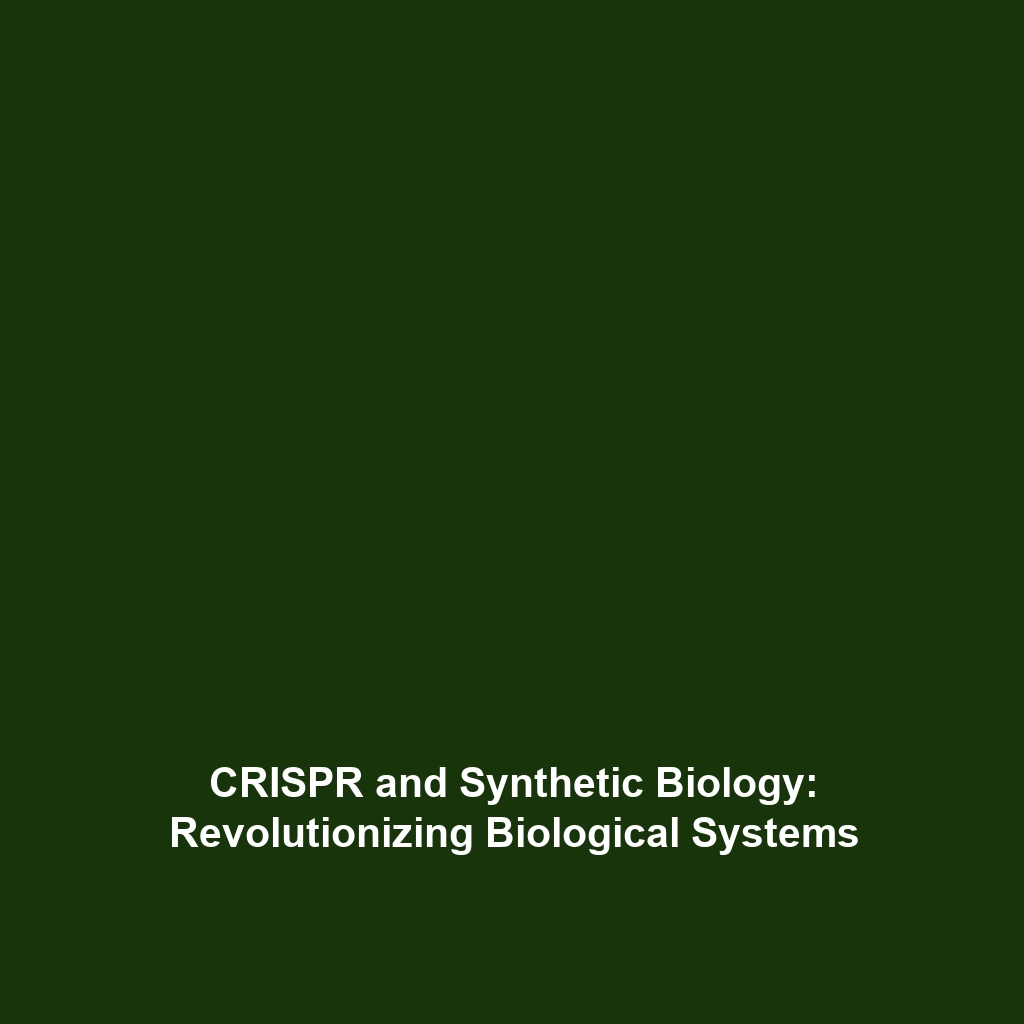CRISPR for Infectious Diseases: How Gene Editing is Being Used to Combat Viral Infections
Introduction
CRISPR gene editing has emerged as a transformative technology in the field of genetics, offering innovative approaches to tackle some of the world’s most pressing health challenges, particularly infectious diseases. The significance of CRISPR lies in its ability to precisely alter DNA, thereby providing new avenues for combating viral infections such as HIV, Zika virus, and the recent challenges posed by the COVID-19 pandemic. As we delve deeper into how CRISPR for infectious diseases is employed, we uncover its potential impact on global health and disease prevention efforts.
Key Concepts of CRISPR for Infectious Diseases
CRISPR (Clustered Regularly Interspaced Short Palindromic Repeats) technology, developed over the last decade, allows for targeted modifications in the genetic material of organisms. Key concepts associated with CRISPR for infectious diseases include:
- Gene Editing Precision: CRISPR’s ability to specifically target and modify genetic sequences minimizes unintended effects.
- Cas9 Enzyme: The Cas9 protein acts as molecular scissors, allowing the editing process to occur at precise locations within the genome.
- Guide RNA: Custom-designed RNA strands direct Cas9 to the target DNA, enabling targeted interventions against viral genomes.
Together, these elements demonstrate how CRISPR fits into the broader category of CRISPR gene editing, establishing it as a robust tool for addressing viral infections.
Applications and Real-World Uses
The practical applications of CRISPR for infectious diseases have been groundbreaking. Specifically, gene editing is successfully being utilized to:
- Treat HIV: Researchers are exploring how CRISPR can be employed to disrupt the HIV genome within infected cells, potentially providing a functional cure.
- Combat Zika Virus: Innovative strategies involve editing the genomes of mosquitoes, making them resistant to Zika virus transmission.
- Speed Up Vaccine Development: CRISPR facilitates rapid testing and modification of vaccine candidates against emerging viral pathogens.
These applications highlight how CRISPR is being effectively used in the realm of infectious diseases, showcasing its far-reaching potential in CRISPR gene editing.
Current Challenges
Despite the promise of CRISPR for infectious diseases, several challenges persist, including:
- Off-Target Effects: Unintended genetic modifications can occur, raising safety concerns.
- Regulatory Hurdles: Navigating the complex landscape of regulatory approvals can slow research and application.
- Public Perception: Ethical concerns surrounding gene editing persist, potentially impacting public acceptance and funding.
Future Research and Innovations
The future of CRISPR for infectious diseases is promising, with ongoing research paving the way for new breakthroughs. Innovations on the horizon include:
- Base Editing: A next-generation CRISPR technique that allows for more precise edits without cutting the DNA strand.
- Prime Editing: This innovative method offers ‘search and replace’ capability for DNA sequences, potentially overcoming current limitations.
- Combining CRISPR with Other Therapies: Future treatments may integrate CRISPR with antiviral drugs for synergistic effects in infection management.
Conclusion
In conclusion, CRISPR for infectious diseases stands as a groundbreaking application of gene editing technology, poised to revolutionize how we combat viral infections. As research continues to advance, the importance of understanding CRISPR gene editing’s implications for infectious diseases cannot be overstated. For further reading on related topics, explore our articles on Vaccine Development with CRISPR and Ethical Issues in Gene Editing.









